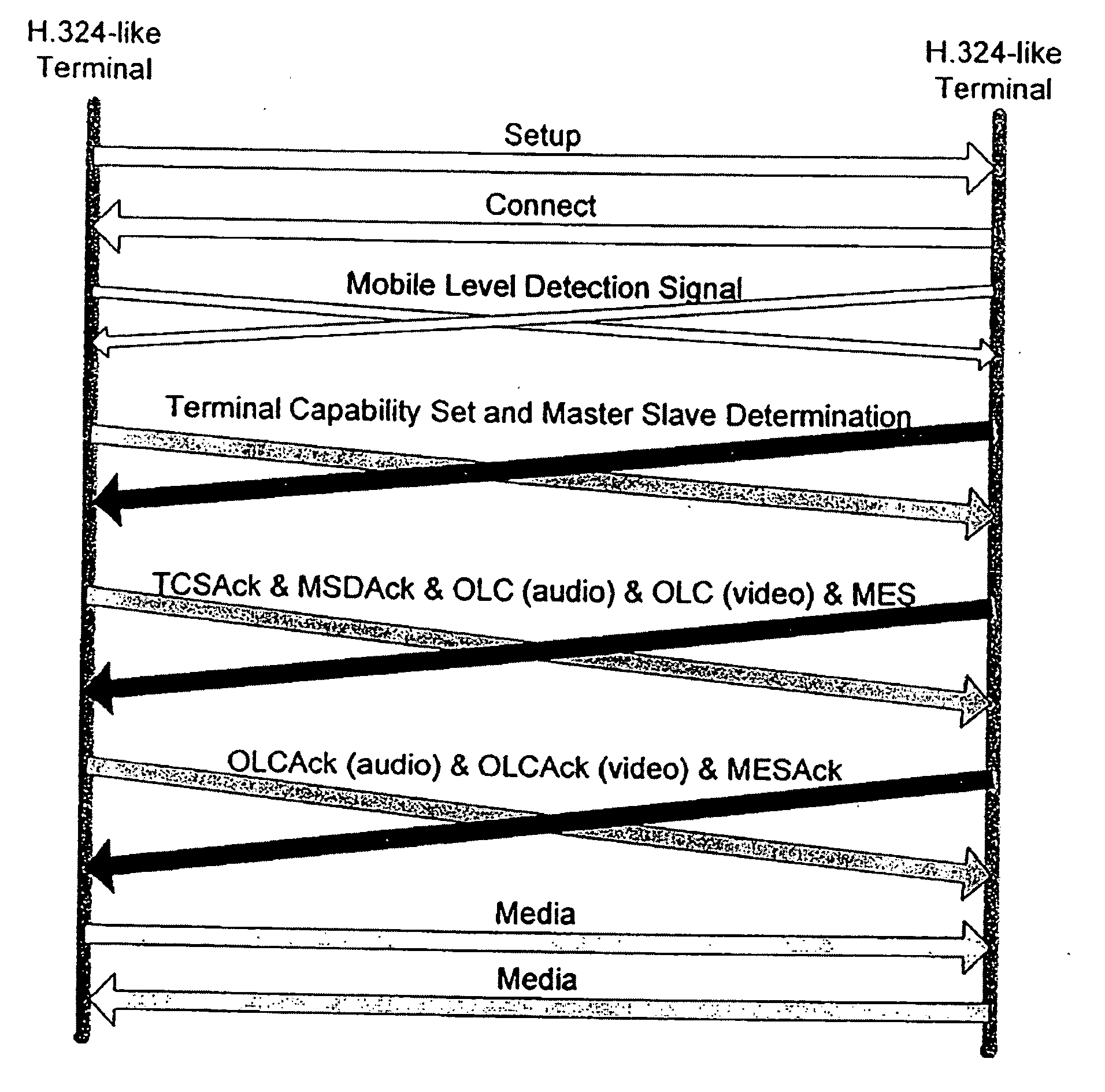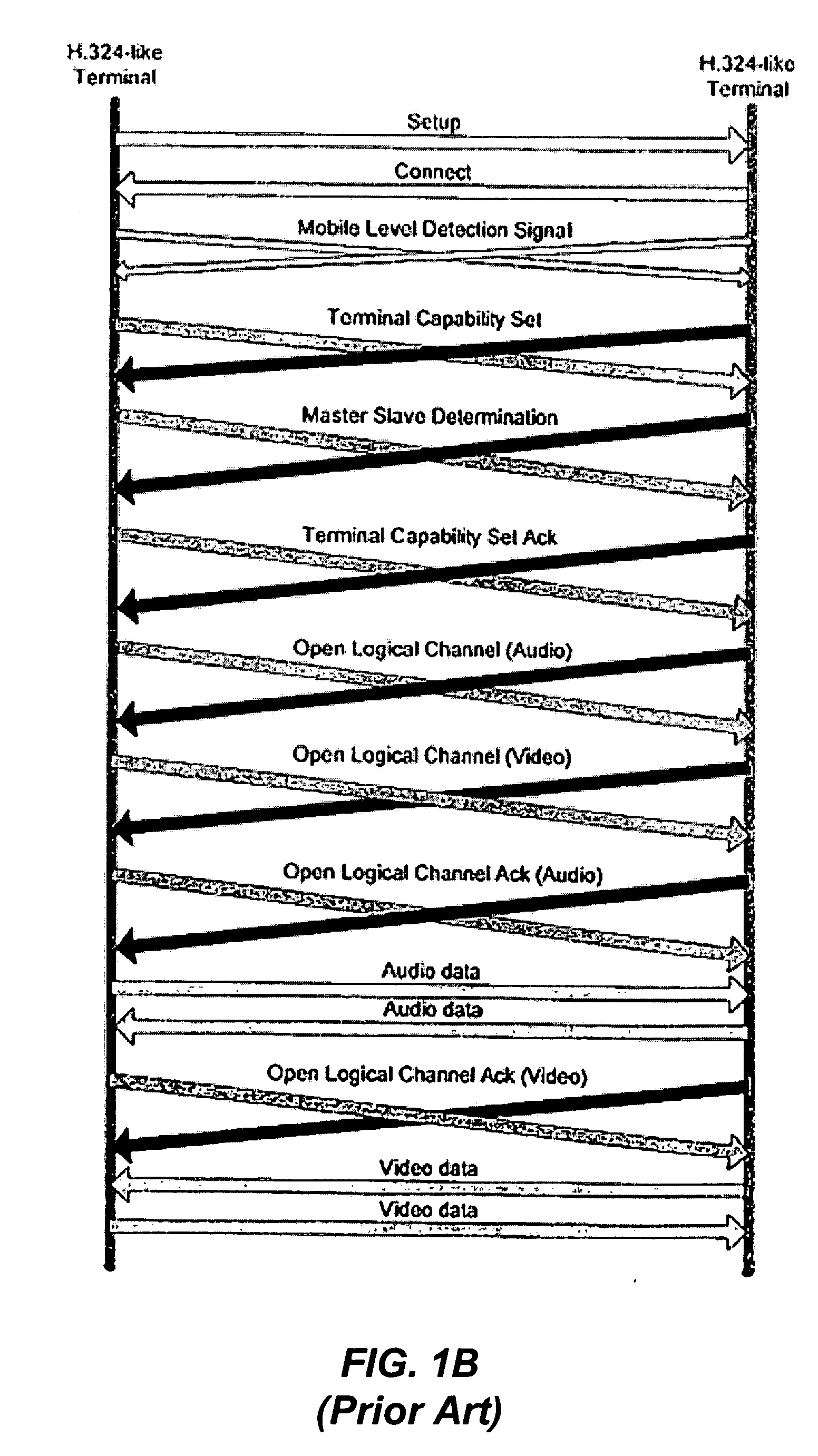Methods and system for fast session establishment between equipment using H.324 and related telecommunications protocols
a technology of telecommunications protocol and session establishment, applied in the field of multimedia telecommunication, can solve the problems of ten h.245 message round trip delays, affecting the quality of telecommunications services, and affecting the quality of telecommunication services, so as to reduce the time required for establishing calls
- Summary
- Abstract
- Description
- Claims
- Application Information
AI Technical Summary
Benefits of technology
Problems solved by technology
Method used
Image
Examples
example embodiment
[0075] Type I
[0076] In a particular embodiment of this method of concatenated H.245 messages a terminal combines H.245 Request Terminal Capabilities (TCS) and Request Master Slave Determination (MSD) messages into a single H.245 PDU. It also concatenates TCS and MSD Response Messages (Acks), multiple Open Logical Channel Requests (OLC) and Multiplex Table Entry Send Request (MES) in a single H.245 PDU. Finally it combines OLC and MES responses into a third H.245 PDU. The process of setting up an H.324 call between two terminals which support this embodiment of the concatenation method is illustrated in FIG. 2. The result of adopting this approach reduces the number of round trips required for call setup from around ten to three. This embodiment requires that the MSDSE and CESE state machines can run in parallel, and that the multiple LCSE and MTSE state machines can run in parallel. This embodiment is merely one example of the application of the method of concatenated H.245 messages...
PUM
 Login to View More
Login to View More Abstract
Description
Claims
Application Information
 Login to View More
Login to View More - R&D
- Intellectual Property
- Life Sciences
- Materials
- Tech Scout
- Unparalleled Data Quality
- Higher Quality Content
- 60% Fewer Hallucinations
Browse by: Latest US Patents, China's latest patents, Technical Efficacy Thesaurus, Application Domain, Technology Topic, Popular Technical Reports.
© 2025 PatSnap. All rights reserved.Legal|Privacy policy|Modern Slavery Act Transparency Statement|Sitemap|About US| Contact US: help@patsnap.com



